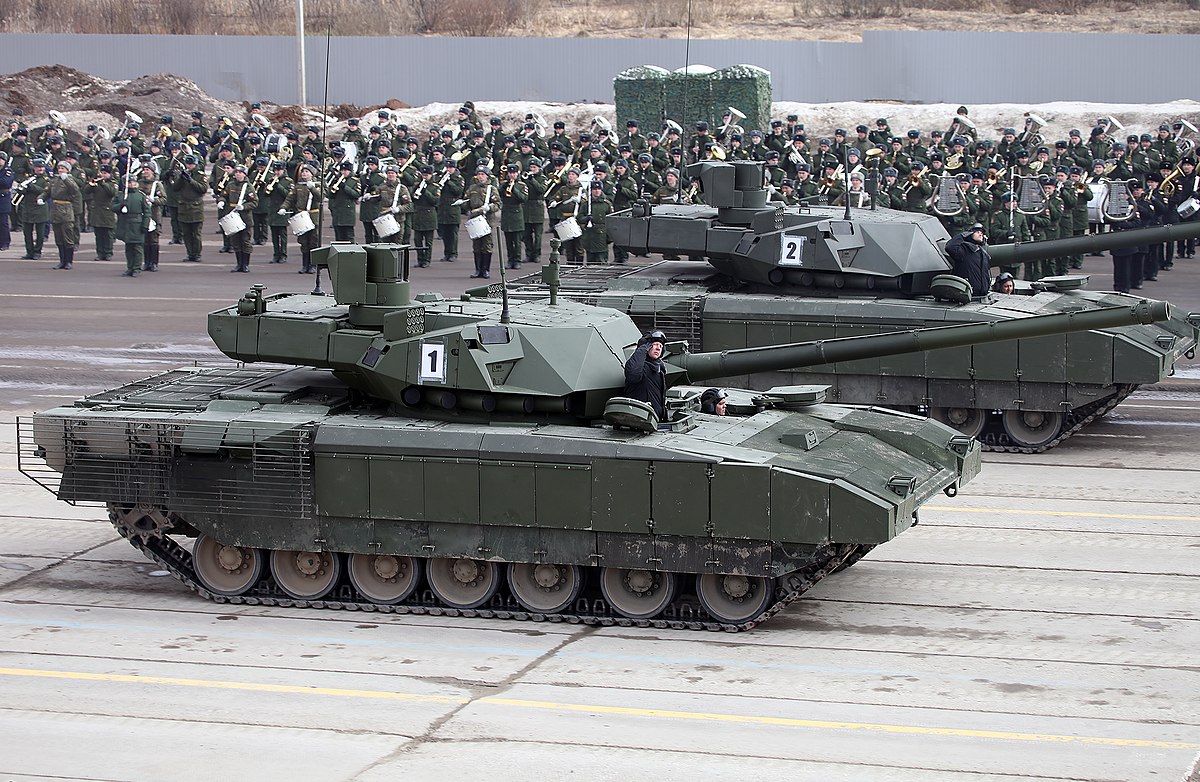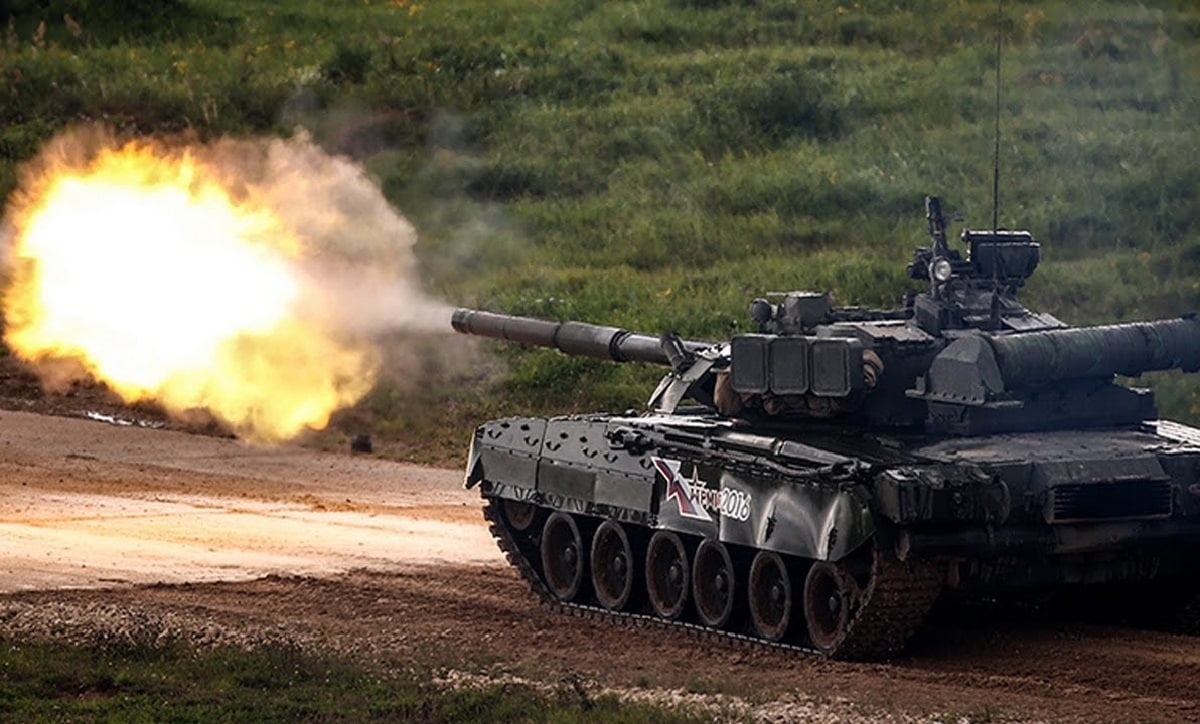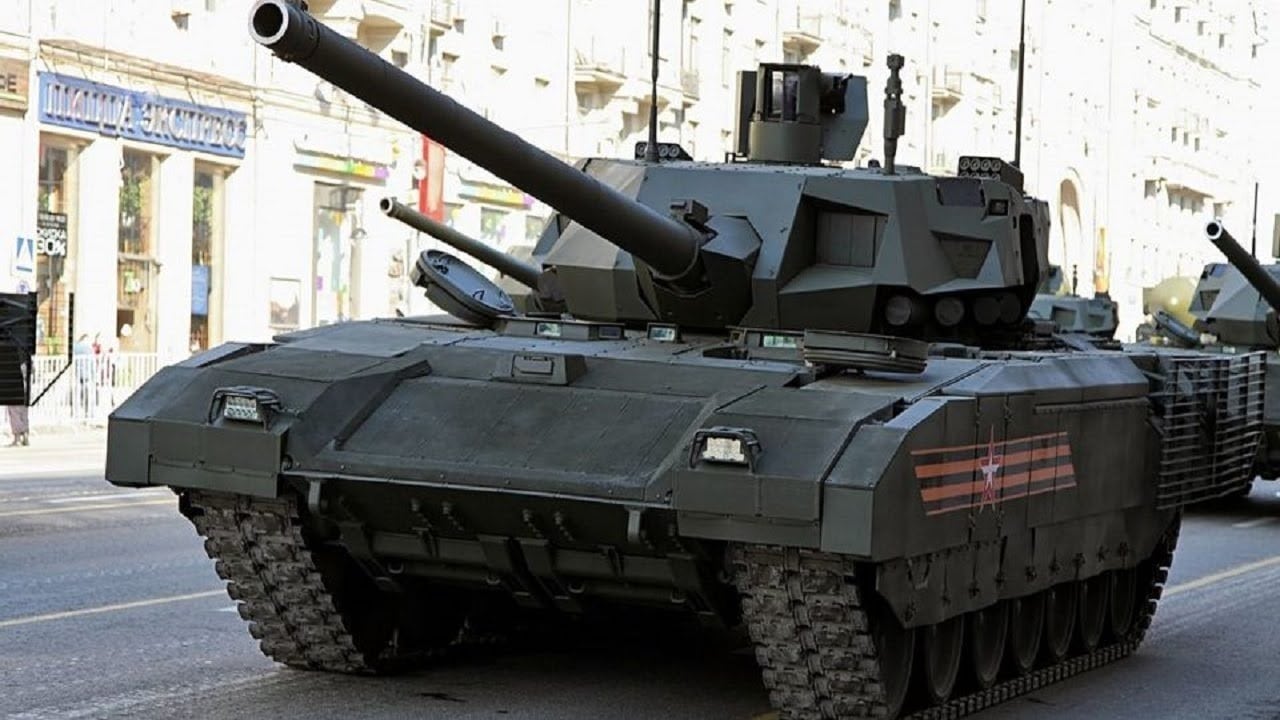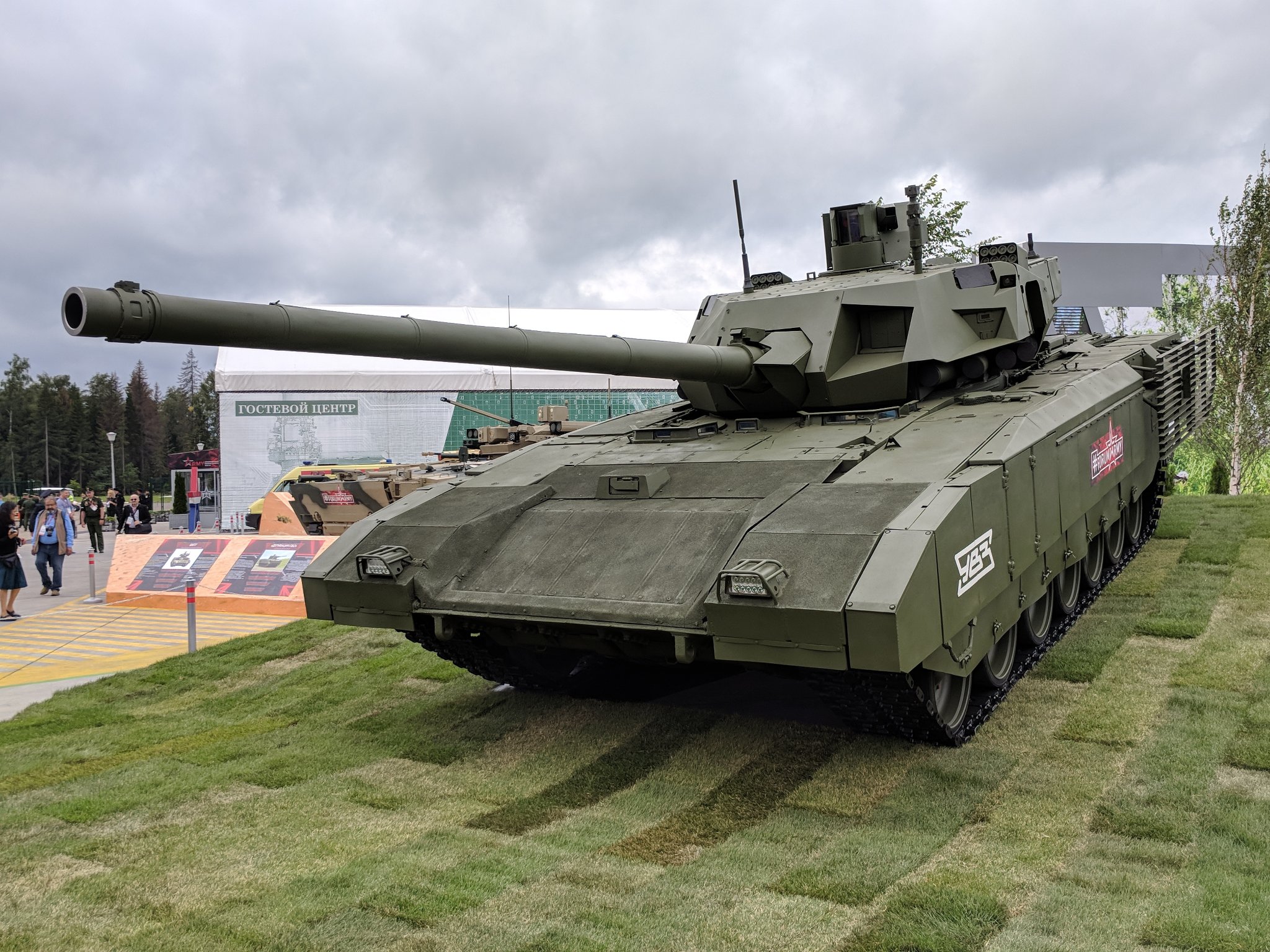T14 Armata Tank - This article may require copy editing for grammar, style, consistency, tone or spelling. You can help by fixing it. (January 2023) (Learn how and how to remove this template message)
The T-14 Armata (Russian: Т-14 «Армата» ; industrial name Russian: Объект 148, romanized: Ob'yekt 148, lit. 'Object 148'), is based on the Russian main battle tank (MBT). . Armata Universal Combat Platform.
T14 Armata Tank

, Russia's TASS state news agency said that serial production of the Armata is expected to begin in 2022, with a test batch of 100 delivered to the 2nd Guards Tamanskaya Motor Rifle Division expected to begin in 2022.
Destroyed Tanks Blow Hole In Russian Military Myth
After the cancellation of the T-95 in 2010, Uralvagonzavod began studies on the design of the OKR Armata (Armamt). The study resulted in Item 148 based on the T-95 (itself based on Item 187). The Russian army has had limited orders for the T-90 since 2012 to prepare for the arrival of the new tank.
The T-14 appeared for the first time in March 2015, when several tanks with covered turrets were loaded into a train carriage in Alabino. It was later unveiled at Moscow's 2015 Victory Day celebration on May 9.
During an exercise in 2015, one of the tanks suddenly stopped moving, and after efforts to pull it failed, it took off under its own power within minutes. some 15.
At least seven T-14 Armata tanks appeared in Moscow's Victory Day parade in 2015 and 2016, five in 2017 and 2018. Four were expected as promotional materials ahead of the 2019 parade.
Russia's T 14 Armata: The Tank That Could Change Everything?
Government tests of the tank began in early 2020. This was announced in April 2020, when the Minister of Industry and Trade, Dis Manturov, stated that the T-14 has already been tested in combat conditions in the Syrian Arab Republic .
Later in July 2020, testing of an unplanned version of the T-14 "Tachanka-B" (Russian: Тачанка-Б) was announced.
In November 2022, The Moscow Times and Newsweek reported that the government's program to develop the T-14 Armata was suspended because Russia's 2022 invasion of Ukraine would require drastic changes to the planned project.
However, in the same month, several videos and photos of the T-14 appeared on social media, showing Russian military training organized in the same stadium. The videos were taken at the training ground in Kazan where the training units of the Kazan Higher Tank Command School are located.
File:t 14 Armata (27053434067).jpg
On December 25, 2022, Vladimir Solovyov, a TV presenter and defender of the Russian leadership, posted pictures of the T-14 combat training, along with other sources that the tank is being prepared for combat and is already sent to "Special Forces. Area of operation". .
In 2016, the Russian Ministry of Defense announced that it had signed a contract for a "test batch" of 100 T-14 tanks in 2020 and extending the entire project to 2025.
In July 2018, the Deputy Prime Minister of Defense Industry and Space Yuri Borisov said that there is no need to produce the latest version of its predecessor, the T-72, "Armata, which is still work against America, Germany and the French. . Comrades", "Because our army is full of Armatas, T-72s are much needed in the market."
In August 2018, at the ARMY2018 Conference outside Moscow, the Russian Ministry of Defense signed an agreement to purchase 32 T-14 tanks and 100 T-15 combat vehicles, which will be completed in 2021.
Russian T 14 Armata Main Battle Tank 1/72 Zvezda
In February 2019, it was announced that the first 12 tanks would be delivered on the d of that year.
In August 2019, the Russian Military-Industrial Courier reported that 132 Armata-platform vehicles were contracted until 2021 (including T-14 tanks, T-15 IFVs and T-16 BREM ARVs (ru: T)-16 (БРЭМ) . , assuming that 44 cars can be produced per year, only 16 will be delivered in 2019. This meant a shortage of at least 28 cars that year.
In mid-January 2020, the head of Rostec (a joint venture with Uralvagonzavod) said that the Armata platform vehicle including T-14 tanks was not delivered, and in January, the CEO of Uralvagonzavod said that the weapons of Armata-platform (T- 14 tanks are not required. ) Delivery will begin in 2020 to begin operational testing, with the entire contract for 132 vehicles of the Armata-platform completed in 2022.

Also in January 2020, it became clear that the construction office has not met the requirements of the integrated gin tank, delaying the introduction, and the project to develop the gin will be closed in the first quarter of 2020. in the tank at some point.
Russia's T 14 Armata Main Battle Tank
In August 2020, the Minister of Industry and Trade told reporters that the production of combat vehicles, including 132 Armata-platform tanks and T-14 tanks, has begun and will be released after the settlement problems with gen and thermal imaging properties. Armed forces in 2021.
In July 2021, the Minister of Industry and Trade, Dis Manturov, said that the tank will start serial production in 2022. However, in March, the Minister of Defense Sergei Shoigu said that it is a group of "experimental and industrial " will only be delivered in 2022.
In August 2021, Deputy Minister of Defense Alexei Krivoruchko said that in 2021, the Russian Army will receive 20 Armata T-14 tanks.
On August 23, 2021, a Rostec official said that the company had sent an undisclosed number of T-14 tanks to the Russian armed forces "in a test batch."
Us Abramsx, Russian Armata Next Gen Tanks Come Out In Open As Moscow Intensifies Attack On Ukraine
As of November 2021, government trials were underway and expected to be completed in 2022, and a "flight group" of twenty tanks was yet to be delivered to the military.
On December 24, 2021, First Deputy General of Rostec Vladimir Artyakov announced that the "serial production" of the T-14 has been announced.
On December 9, 2021, the First Deputy of the MIC Andrei Yelchaninov said that the government's testing of new weapons for the T-14 should be completed by 2022, and that more than 40 Armata tanks are will be delivered to the Russian army after 2023.

The Armata was developed over five years and has many new features, including an unmanned turret. A crew of three sits in an armor capsule at the front of the fuselage.
Russia Tests Its Latest T 14 Armata Tank In Syria
The gun is capable of firing new guided missiles such as the 9M119M1 Invar-M, which has an effective range of 100 meters to 5 km.
Secondary armament consists of a 12.7 × 108mm Kord machine gun (GRAU index: 6P49) (not observed in the 2015 parade) and a 7.62 × 54mmR Pecheg PKP (GRAU index: 6P41) or 7PKTM (6PKTM) machine gun with and 1,00000
However, Russian engineers have kept the 125mm gun for now, assessing the need for gun upgrades to increase performance and concluding that a larger weapon may have some advantages.
During the prototype stage, several genes with power from 1500 to 2000 hp were tested on the platform, it is reported that the 1500 hp version gives a top speed of 82 km/h. The T-14 is powered by a ChTZ 12N360 (A-85-3A) diesel engine.
Russia's Mighty Armata Set To Roll Into Production
The T-14 has a 12-speed automatic gearbox, a top speed of 80–90 km/h (50–56 mph) and a range of 500 km (300 mi).
Unlike earlier Russian and Soviet designs such as the T-90/80/72/64, the T-14 has 700 mm side track wheels based on the T-80 model.
This is done to improve the efficiency of the tank, since the effective stopping mechanism improves the time to close the target.

2.2 times, and reduces the time between target detection and feedback by 31%, and all this results in a smoother ride.
Commission] T 14 Armata (1) By Countgooseman On Deviantart
The main protective armor is made of new steel marked 44S-SV-SH and has a very long life and high temperature resistance. It is 15% lighter than the steel used in old tanks. A completely new method of composite armor with an unknown ceramic layer and the use of ERA in its basic design as a continuous layer (not in the form of "bricks") have been added. Applique arms 2/3 in the front on the sides. The slats (cage) are on the sides and back 1/3 of the armor.
Both chassis and turret are equipped with front, side and top malachite dual explosive reactive armor (ERA) systems.
The tank uses an integrated, computerized system that monitors the status and performance of all the tank's modules. In combat, software can analyze threats and suggest elimination or take action automatically, and detect and correct personnel errors without an external threat.
The tank is equipped with an active Afganit (Russian: Афганит) (APS) system. Earlier Russian APS were "hard kill" versions (Drozd, Ara) or "soft kill" version (Shtora-1). Hard-lethal measures involve heavy strikes on threatening missiles or other weapons, while soft-lethal measures disable guidance systems (laser dazzlers or infrared emitters). Afghanit aims to introduce a first-of-its-kind system that includes both soft and hard action.
Armata Russian 5th Generation Main Battle Tank Stock Photo By ©yayimages 261609336
It includes a millimeter-wave radar, both kinetic ergy petrators and tandem charges to detect, track and intercept incoming anti-tank bombs.
Currently, with expected future increases, the maximum target speed that can be achieved is 1,700 m/s (Mach 5.0).
T14 tank armata, russian t14 tank, tank armata, t14 heavy tank, t14 tank, t14 iso tank container, t 14 armata main battle tank, russia t14 armata, t 14 armata tank, russian t 14 armata tank, russian t 14 armata main battle tank, tank armata rusia

0 Comments